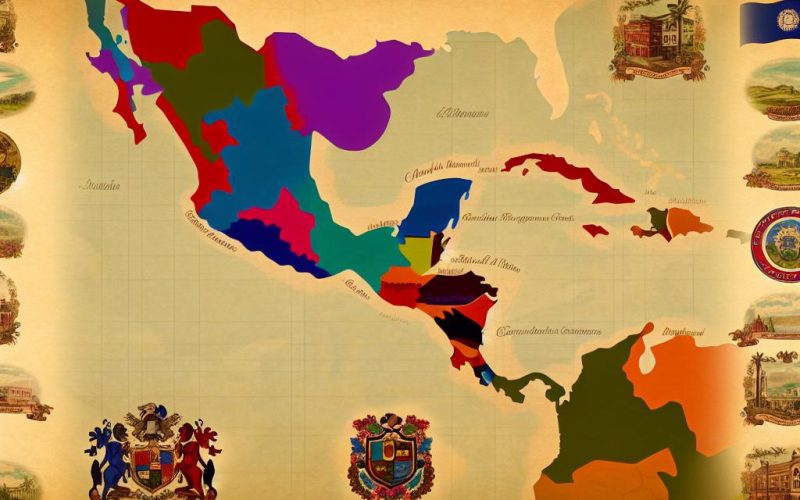Overview of the United Provinces of Central America
The United Provinces of Central America, also known as the Federal Republic of Central America, represents a fascinating chapter in the history of Central America. This entity was a federation that emerged during a period of significant upheaval and transformation, following the broad independence movements that swept across Latin America in the early 19th century. These movements aimed to dismantle the long-standing colonial rule of the Spanish Empire, paving the way for new, independent political entities across the region.
Formation and Structure
The creation of the federation can be traced back to 1823, coming into existence shortly after the collapse of the Mexican Empire. The Mexican Empire had briefly included the territories that are today known as Guatemala, El Salvador, Honduras, Nicaragua, and Costa Rica. These territories united under one federal system, inspired by the structure of the United States. They envisioned a federative system where each member state retained a degree of autonomy while simultaneously participating in a centralized federal government. This dual structure sought to harmonize regional governance with collective unity.
Political Ambitions and Challenges
The leadership of the United Provinces of Central America harbored grand ambitions for their nascent federation. They pursued the establishment of a stable and cohesive union that could not only withstand external pressures from other nations but also serve as a catalyst for economic development and social progress. However, the realization of these ambitions was fraught with challenges. The federation contended with deep-seated internal divisions, where each state often prioritized its regional interests and economic goals over collective unity. These divergencies were compounded by infrastructural inadequacies and the starkly varied geographical landscapes present in the region, further complicating efforts to foster a unified national identity.
Decline and Dissolution
Despite the aspirations for a strong and unified federation, the United Provinces of Central America grappled with persistent political instability and frequent conflicts. The centralized federal government frequently found itself at odds with local authorities, as the concentrated power structure failed to reconcile with local state interests, fostering an environment of tension and dissent. Political unrest, coupled with internal civil wars, severely undermined the federation’s stability. By 1838, these pressures became insurmountable, leading to the gradual dissolution of the federation. In the subsequent years, each member state chose to pursue its path towards sovereign nationhood, effectively marking the end of the union.
Legacy and Impact
Although the United Provinces of Central America existed for a relatively short period, its impact on the region’s history is undeniably significant. The federation stands as an early experiment in regional integration in Latin America, striving to blend local autonomy with collective governance—a complex balancing act that posed significant challenges. The legacy of the federation is particularly evident in later initiatives aimed at fostering unity and cooperation among Central American states. One notable example is the Organization of Central American States, which reflects the enduring aspiration for regional collaboration inspired by the earlier federation’s attempts.
For those interested in delving deeper into this historical narrative, numerous resources provide detailed analysis. These include online databases, archival documents, and academic publications dedicated to Latin American history, offering rich insights into the socio-political context and ramifications of the United Provinces of Central America’s existence. Exploring these materials can provide a more nuanced understanding of the challenges and legacy of this early attempt at regional unity.
